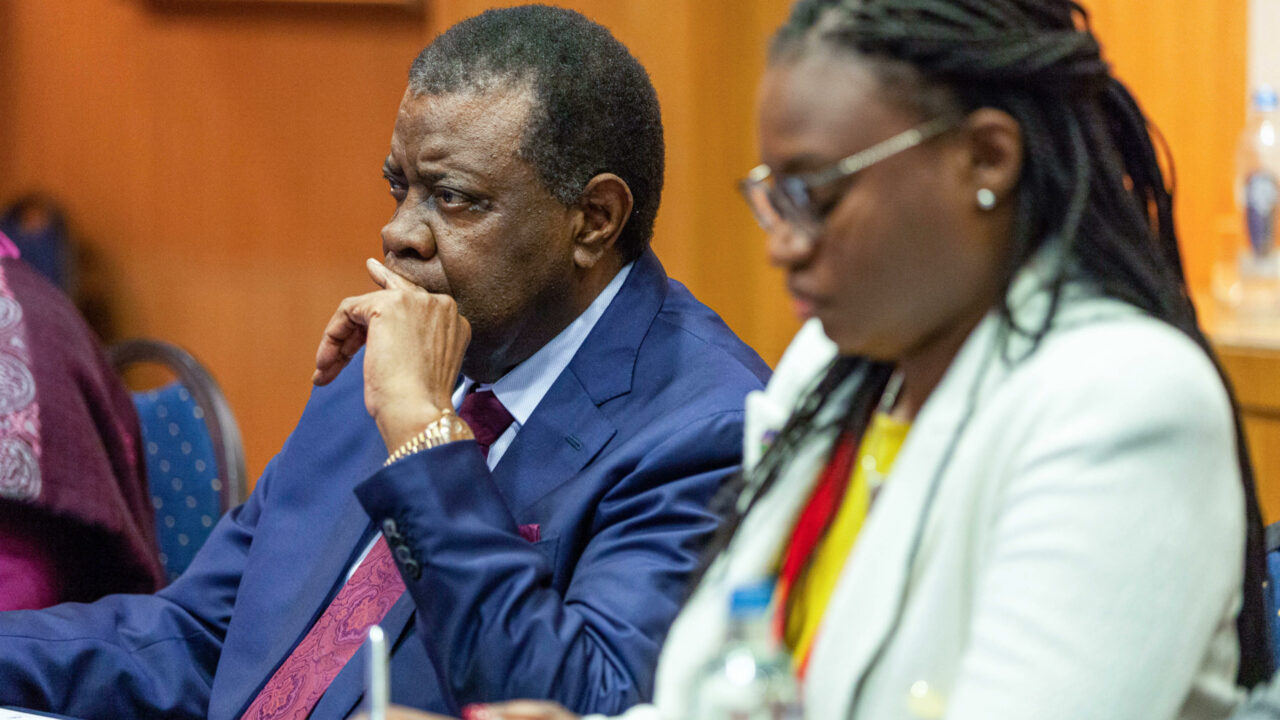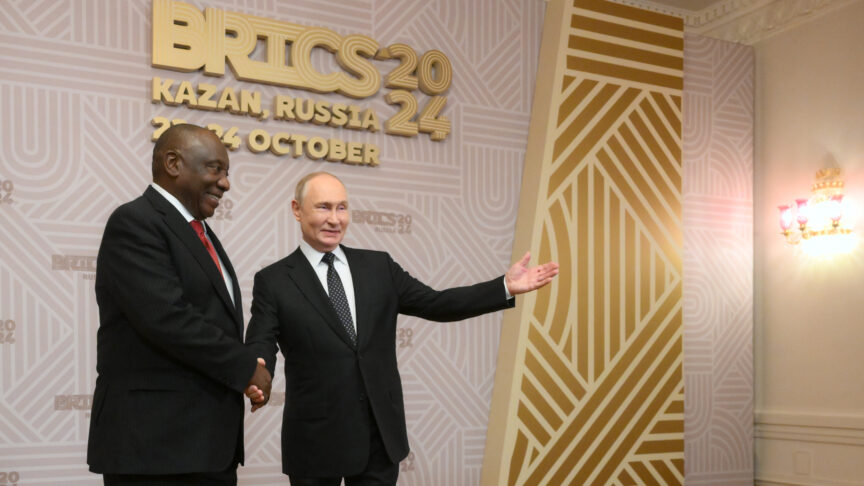Not just hot air: Realising the potential of the EU-Namibia green hydrogen partnership
The EU and Namibia have launched the roadmap of their renewable hydrogen partnership. To ensure it effectively helps the EU’s sustainability goals and boosts Namibia’s economic growth, planning should be clearer and more realistic
Renewable hydrogen is expected to be a key fuel in the green transition – the European Union estimates that it could make up 20 per cent of its energy mix by 2050. As such, the EU is strengthening its strategic renewable hydrogen partnership with Namibia, a country rich in renewable energy resources and able to produce clean hydrogen at competitive prices. This partnership hinges on their different priorities: the EU needs to secure access to alternative energy sources, in part, through importing renewable hydrogen from price competitive sources while upholding sustainability standards. Namibia, on the other hand, wants the export of renewable hydrogen to lead to increased industrialisation, economic growth, and development through greater access to energy and water, job creation, and skills training.
The partnership became more concrete with the recent launch of the operational roadmap in October, making Namibia the only African country with such agreement. The roadmap details the steps required between this year and 2025 for the development of green industrialisation and decarbonisation through renewable hydrogen and raw materials. While this progress is laudable, the overall conditions and priorities which will guide the plan’s implementation should be clearer and more realistic to avoid market gaps and wasted production. This includes defining the conditions for trade, making more risk capital available, maintaining affordability and competitiveness, and ensuring a stable regulatory environment.
Unlocking the roadmap
Defining trading conditions
As the partnership stands, its trade conditions for hydrogen are ambiguous and the trading criterion is split between their respective priorities: the promotion of sustainable development through energy access and economic development in Namibia, and the EU’s desire for decarbonised energy security and technology leadership. Instead, the European and Namibian governments should work together to integrate and clarify the trading criterion in an import-export framework. Aside from achieving energy security and decarbonising the EU, hydrogen production and trade should also be assessed on its contribution to Namibia’s economy, for example, through stimulating economic growth, job creation, and innovation. Achieving this relies on the proper enforcement of relevant frameworks and their supporting policies, regulations, and quota regimes at the EU and Namibian national government levels.
Trade should also work towards achieving universal energy access and economic progress. This will require that renewable hydrogen can also be used in Namibia’s energy mix to support electricity supply and for industrial processes, like green steel production. To achieve such conditions, the EU should further support Namibia by providing the needed equipment, investing in training so that Namibia has the right local labour for the projects, and supporting research and development. For the EU, establishing additional frameworks for quantifying its mitigated CO2 are also important in discounting climate mitigation efforts.
Making more risk capital available
Hydrogen presents a ‘chicken-or-egg’ problem, where both demand and supply must be developed simultaneously. EU demand is emerging to be quite concrete, with the European Commission planning to import 10 million tonnes of hydrogen annually by 2030 (out of 20 million tonnes estimated consumption) to fuel sectors such as transport and manufacturing. On the other hand, Namibia’s supply of large-scale renewable hydrogen for local use and for export into the EU is not yet firmly established. It requires more certainty over sources of financing, investment, and infrastructures such as roads and ports. The high investment risk of renewable hydrogen development means that finance from the EU in the form of concessional loans, grants, and blended funds from EU Development Finance institutions (DFIs), and export credits from Export Credit Agencies (ECAs) will play a major role, especially at the early construction stages of the projects. The EU has already promised to mobilise €1 billion of public and private investment for renewable hydrogen and raw materials infrastructure in Namibia. The German government has already agreed to invest €40m in Namibia’s renewable hydrogen production and offer technical and financial support. State-backed firms in the Netherlands have also created a €1 billion sovereign wealth fund in partnership with the Namibian government for renewable hydrogen development in the country. While these commitments boost developer confidence, they should be redeemed in good time to unlock further financing from commercial banks and the private sector and to reduce the time lag on reaching final investment decisions to ensure long-term supply.
Maintaining affordability and price competitiveness
Affordability and market ramp-up are interlinked: exorbitant hydrogen prices could jeopardise competitiveness and industrialisation. Low prices, on the other hand, create additional incentives for sectors to switch to hydrogen. The affordability of renewable hydrogen from the Namibian side is therefore a vital objective. Import prices are mainly driven by production and transport costs. Namibia has high wind speeds and more than 3,500 hours of sunshine per year, coupled with vast unused space for scale-up, it is possible to produce clean hydrogen to for around €1.50 to €2.00, the most competitive price globally. However, not enough attention has been paid to the planning and construction of transport infrastructure for export. The feasibility of shipping derivatives is still being researched, while transporting in the form of ammonia or through pipelines could raise costs. Given Namibia’s distance from Europe, the transport cost for exporting clean hydrogen derivatives to the EU needs to be factored in and will need be competitive in order to meet the EU’s demand at affordable prices.
The EU should ensure that its regulations are practical, adaptable, transparent, and evidence-based to effectively govern renewable hydrogen trade with Namibia
Maintaining a stable regulatory environment
Aside from the current global economic uncertainty, disruptions to trade can also stem from the EU’s at times inflexible regulations and excessive bureaucratic procedures. As such, the suitability and adaptability of regulations, economic and investment policies, and trade routes from Namibia to Europe are important conditions for unlocking the partnership’s goals. The EU should ensure that its regulations are practical, adaptable, transparent, and evidence-based to effectively govern renewable hydrogen trade with Namibia. At the same time, Namibia will need to maintain its political stability through inclusive government policies and fair political power transitions, while working towards achieving reliable exports, and stable transport corridors to continue trade with the EU. To support this, Namibia will need to amend certain laws and acts to reflect current plans for clean hydrogen development and export, including the water resource management acts of 2004 and 2013, the electricity act of 2007, the standards act of 2005, and the equitable economic empowerment bill of 2016.
Marching on with the partnership
The current enthusiasm in the development of clean hydrogen presents a once in a lifetime, opportunity for large-scale cooperation between the EU and Namibia. Namibia is currently among countries in the Africa-Europe Investment Package of the EU’s Global Gateway strategy, which provides a leveraging opportunity to actualise the partnership’s ambitions. The EU’s support is crucial, especially in delivering needed co-investment and risk financing to Namibian developers and investors to reduce risks and financial burden on project development and to avoid additional costs and delays in production and export. The EU’s reluctancy or delay in delivering these commitments will risk making room for other investors who may not have sustainability as their primary aim, while also putting the EU’s cordial and longstanding relationship with Namibia at risk. And for the EU, it could lose out on a huge opportunity to pursue its decarbonisation goals at competitive prices.
Overall, while some progress is already being made in implementing the partnership’s action plan, more efforts to match promised funds and investments with actual disbursement, clarify trading terms, plan infrastructures to ensure affordability, and maintain regulations on both sides, need to follow suit.
The European Council on Foreign Relations does not take collective positions. ECFR publications only represent the views of their individual authors.



